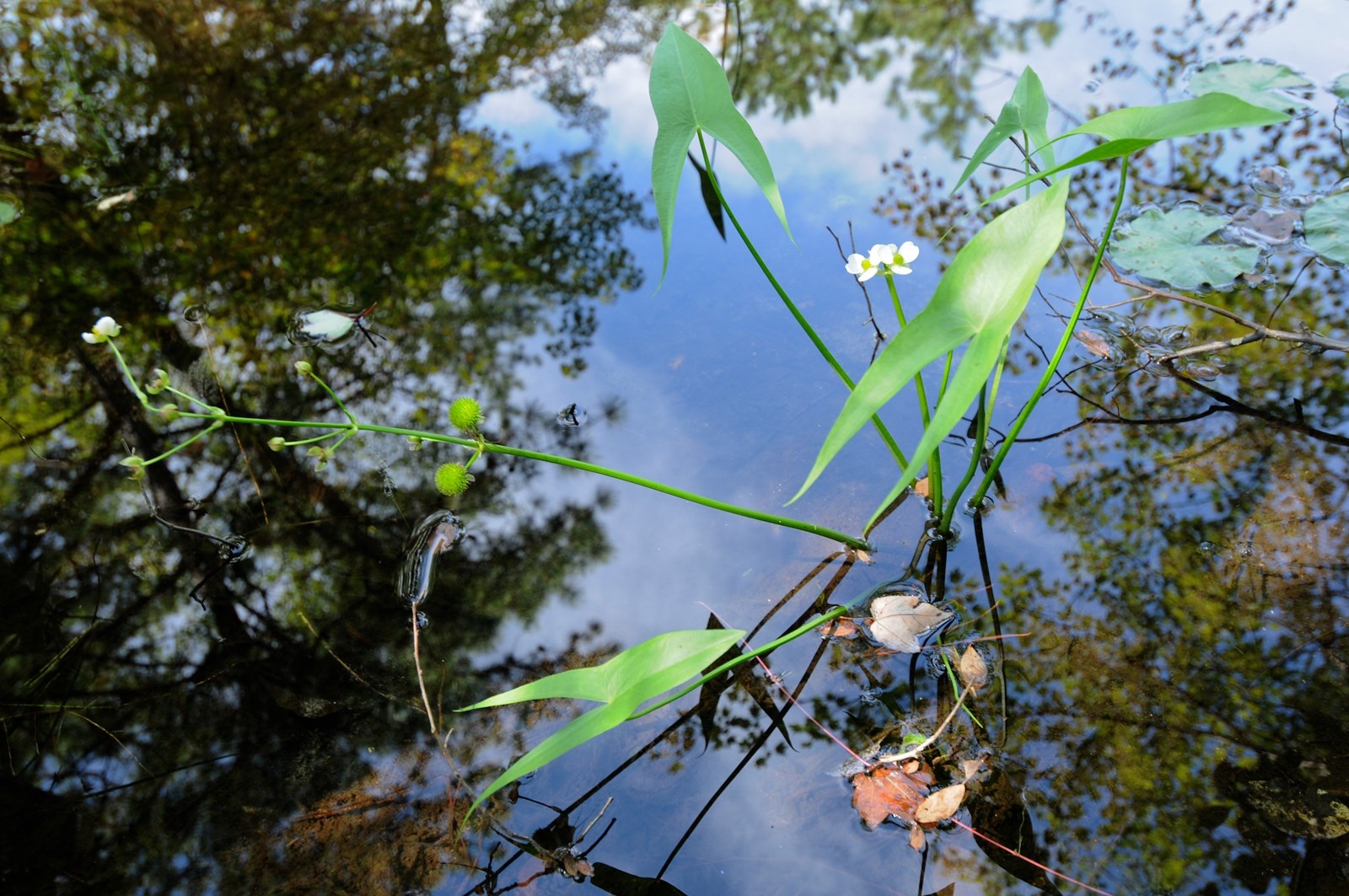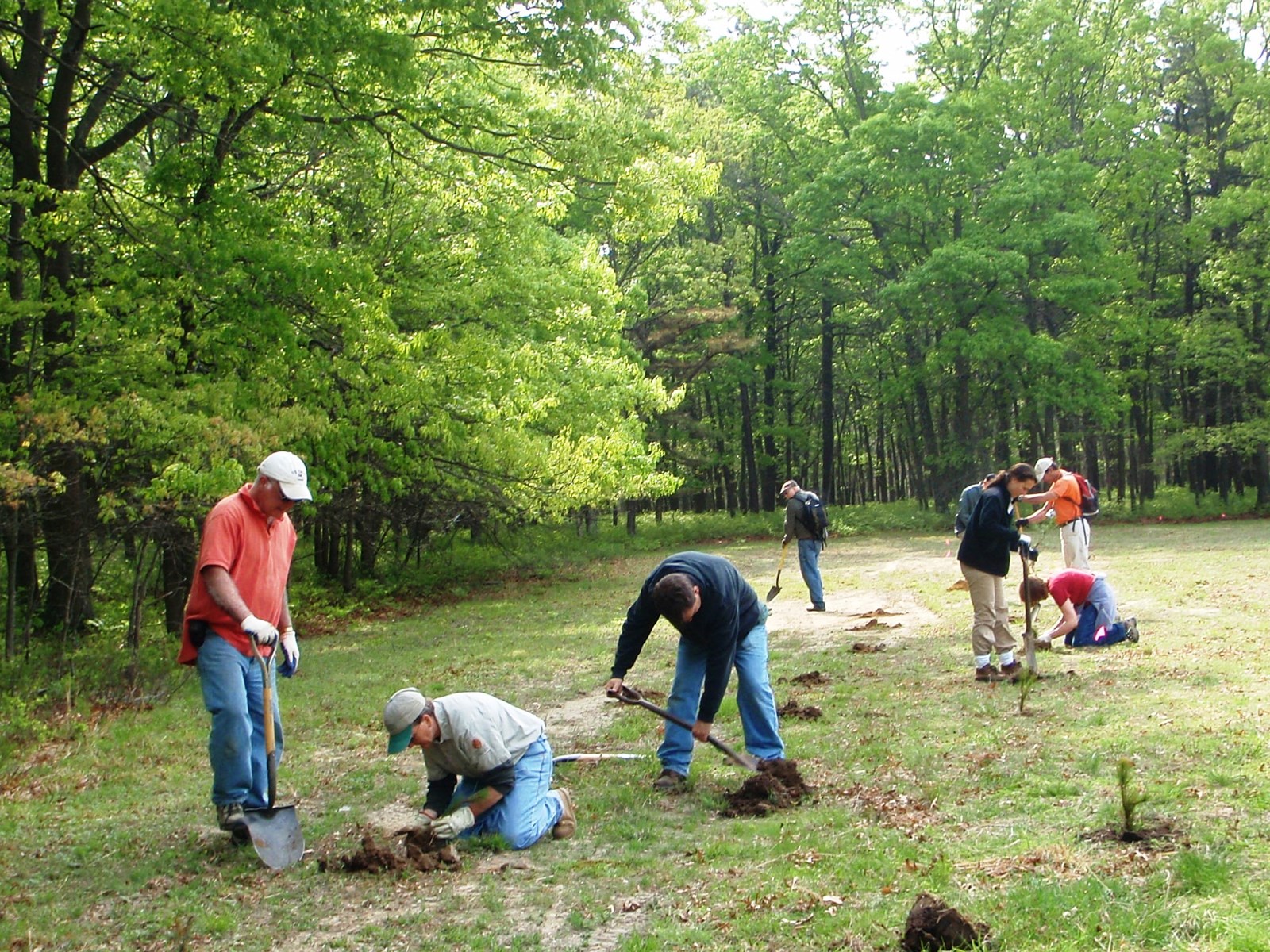The Central Pine Barrens Joint Planning and Policy Commission works cooperatively with public land owning agencies in the Central Pine Barrens to carry out the ecological restoration of natural resources that have been damaged, lost or otherwise impaired. The Commission, since it does not own land itself, works to assist these agencies by sponsoring and undertaking restoration projects (in coordination with the land-owning agency), furnishing technical assistance, providing financial support where possible and also by supplying Commission staff support to assist with coordinating and implementing restoration and monitoring projects. Initiatives include preparing and implementing prescribed fire burn plans; developing and executing terrestrial ecological habitat restoration projects; conducting invasive species removal; collecting native seeds; planting native tree seedlings, grasses and other native plants; planning, constructing and maintaining barriers to prevent illegal ATV and ORV access; and conducting ground-truthing and monitoring of forest pests such as the Southern Pine Beetle.
 Prescribed fire is essential for helping to maintain the extensive and diverse fire-adapted and fire-dependent ecological communities in the Central Pine Barrens. To support this endeavor, the Commission provides trained and qualified staff who participate in burn implementation, particularly in regard to properties owned and managed by the New York State Department of Environmental Conservation. More recently, the Commission, through an ecological services contract, has commenced the development of prescribed fire burn plans for properties owned and managed by the Department of Environmental Conservation and the Suffolk County Department of Parks, Recreation and Conservation in Flanders, Rocky Point and Eastport.
Prescribed fire is essential for helping to maintain the extensive and diverse fire-adapted and fire-dependent ecological communities in the Central Pine Barrens. To support this endeavor, the Commission provides trained and qualified staff who participate in burn implementation, particularly in regard to properties owned and managed by the New York State Department of Environmental Conservation. More recently, the Commission, through an ecological services contract, has commenced the development of prescribed fire burn plans for properties owned and managed by the Department of Environmental Conservation and the Suffolk County Department of Parks, Recreation and Conservation in Flanders, Rocky Point and Eastport.
The Commission has also supported or undertaken a number of ecological restoration projects in various areas of the Central Pine Barrens. These have ranged from small pitch pine transplanting and revegetation projects in Rocky Point and Shoreham to larger, long-term and complex projects to restore pine barrens habitats on a landscape scale in Flanders. The Commission has also conducted as well as supported ecological inventories of publicly-owned properties in the Central Pine Barrens.
Forest health monitoring and management is another area of ecological restoration in which the Commission has been engaged. On an annual basis the Commission conducts aerial flyovers of the Central Pine Barrens, via a cooperative agreement with the Civil Air Patrol and at times via joint programs with the New York State Department of Environmental Conservation, to obtain a landscape view of overall Central Pine Barrens health. This program has aided detection of developing trends which have included extensive oak mortality and insect infestations and outbreaks. One significant example of this is the Commission’s co-sponsorship of a comprehensive southern pine beetle response and management program. The southern pine beetle, an American species which had previously been documented only in the southern United States, was discovered in 2014 in Suffolk County, primarily within the Central Pine Barrens. This is one of the most destructive forest pests occurring in Central and North America and has killed thousands of native conifers, especially pitch pines, in this area. A multi-pronged approach for combating this species was developed in conjunction with the other primary sponsor, the New York State Department of Environmental Conservation (with assistance from other agencies), which includes aerial and ground reconnaissance, mapping and inventorying; monitoring; suppression; forest health management; public education and outreach.
Invasive species inventorying, removal and eradication is another area of Commission focus. Since 2003, the Commission, with the assistance of its Protected Lands Council, has worked to support invasive species control efforts. As recounted elsewhere, the Commission works with the Long Island Invasives Species Management Area program; conducts invasive plant inventories, assessments and programs; provides data to the iMapInvasives invasive species database and mapping program and conducts public education.
 The Commission also performs activities to restore and mitigate damage to ecological resources caused by illegal activities, including the illegal operation of ATVs and Off-Road Vehicles (ORVs) and dumping of solid waste. The Commission has performed restorations of such areas and also installs, monitors and maintains barriers at various access points to prevent future damage from these activities.
The Commission also performs activities to restore and mitigate damage to ecological resources caused by illegal activities, including the illegal operation of ATVs and Off-Road Vehicles (ORVs) and dumping of solid waste. The Commission has performed restorations of such areas and also installs, monitors and maintains barriers at various access points to prevent future damage from these activities.
(Photo: Pitch Pine seedling planting at Brookhaven State Park)
Native seed collection events undertaken by the Commission involve sending the collected seeds to the New York State Department of Environmental Conservation’s Tree Nursery in Saratoga Springs or to the Long Island Native Plant Initiative for seed banking and plant production to ensure ready sources of genetically native plant materials for restoration. This ensures the continuity of biodiversity by preserving the genetic heritage of Long Island’s native plant populations and the species that depend upon them for habitat. Resulting plant materials are utilized within the Central Pine Barrens to restore areas that have been impacted by ATVs, insects, invasive plants and illegal clearing.
An important component of any ecological restoration effort is an effective monitoring program that collects data and information to ensure the goals of the restoration project are met to inform and guide the development of future restoration projects. Commission staff ensure that such monitoring occurs and assist in developing monitoring programs.
For more information on ecological monitoring and restoration activities the Commission is involved in, visit our online document library and select the category "ecological restoration".
To answer any questions you may have contact ecologist@pb.state.ny.us.